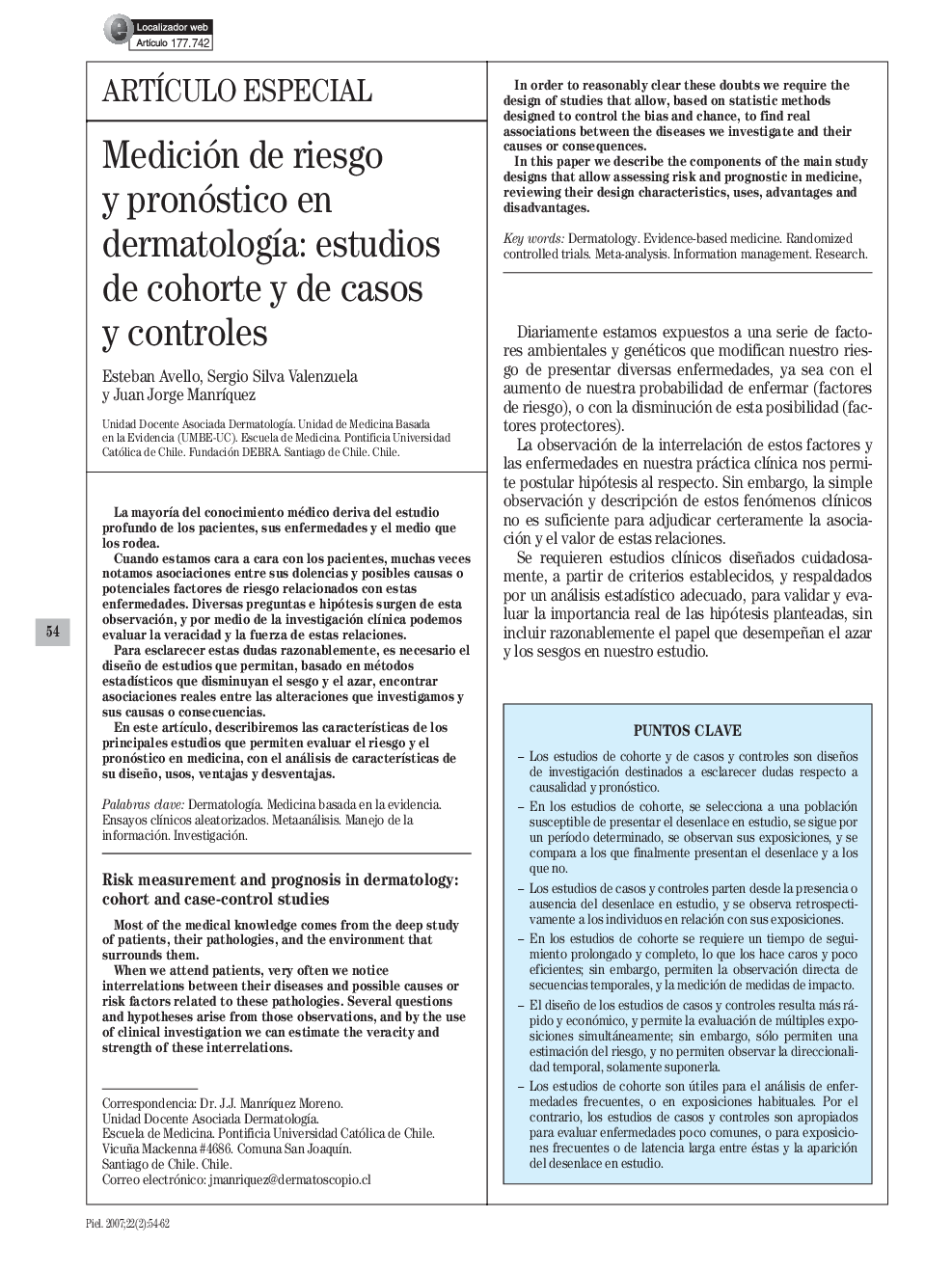| Article ID | Journal | Published Year | Pages | File Type |
|---|---|---|---|---|
| 3222404 | Piel | 2007 | 9 Pages |
La mayoría del conocimiento médico deriva del estudio profundo de los pacientes, sus enfermedades y el medio que los rodea.Cuando estamos cara a cara con los pacientes, muchas veces notamos asociaciones entre sus dolencias y posibles causas o potenciales factores de riesgo relacionados con estas enfermedades. Diversas preguntas e hipótesis surgen de esta observación, y por medio de la investigación clínica podemos evaluar la veracidad y la fuerza de estas relaciones.Para esclarecer estas dudas razonablemente, es necesario el diseño de estudios que permitan, basado en métodos estadísticos que disminuyan el sesgo y el azar, encontrar asociaciones reales entre las alteraciones que investigamos y sus causas o consecuencias.En este artículo, describiremos las características de los principales estudios que permiten evaluar el riesgo y el pronóstico en medicina, con el análisis de características de su diseño, usos, ventajas y desventajas.
Most of the medical knowledge comes from the deep study of patients, their pathologies, and the environment that surrounds them.When we attend patients, very often we notice interrelations between their diseases and possible causes or risk factors related to these pathologies. Several questions and hypotheses arise from those observations, and by the use of clinical investigation we can estimate the veracity and strength of these interrelations.In order to reasonably clear these doubts we require the design of studies that allow, based on statistic methods designed to control the bias and chance, to find real associations between the diseases we investigate and their causes or consequences.In this paper we describe the components of the main study designs that allow assessing risk and prognostic in medicine, reviewing their design characteristics, uses, advantages and disadvantages.
